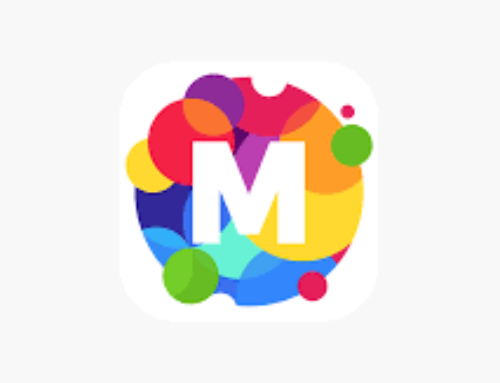 Guest Post by Deeana Radley
Guest Post by Deeana Radley
As we move further into the digital age, the importance of automating our processes becomes more apparent with each passing day.
For businesses to remain competitive, a significant effort in achieving marketing automation is required, as the gains to consumer interactions and experience, and company productivity and profit are many to be had.
Below are the 10 most significant areas where automation can benefit businesses and marketers, as well as some tips on how to get the most out of automation for the marketing department.
Feature #1: Analytics
Analytics is a prime example of how marketers and businesses can benefit from automation. Statistics and data are arguably as important as the products and services a business offers. Marketing data can be acquired, analyzed and acted upon efficiently, at a low cost, to provide immense benefits to the organization, regardless of the field or clientele. Neural networks, artificial intelligence (AI), and automated systems allow for conversion reports, pay-per-click (PPC), open rates, social media stats and net loss of subscribers that can be crafted within mere minutes.
Feature #2: Email marketing
Email marketing is crucial for an effective marketing automation initiative. The technology has become the backbone of online interactions with prospects and customers, and it has the potential to be resource saving as a result. Marketing automation allows a business to streamline all these interactions across the entire customer journey – from the first point of contact, to product-related questions, to Q&A, to completing a sale and gaining a customer. Perhaps even more essential is the ability to schedule and send mass, drop emails to designated groups of customers and clients. Fully customizable email templates can be crafted as well. The result is a well-oiled machine that frees up extraordinary amounts of manpower without the need for any further investment, and with only minimal, required maintenance.
Feature #3: A/B testing
A/B testing, also called split-run testing, is where two variants are tested to measure the effect of a change on a specific metric. With respect to marketing automation, A/B testing is crucial not only to creating an effective online platform but also in keeping it fresh, vibrant and engaging. There is a misconception that A/B testing is subjective, but that’s an egregious error. A/B testing involves a randomized experiment: half the recipients receive one marketing initiative whereas the other half receives another with a change (depicting a marketing automation feature), in order to measure the effect of the change on a specific metric. A/B testing can benefit a company immensely from even a simple neural network.
As the design of a web page requires creative talent, some human input is essential, regardless of the effectiveness of the technology being employed. That said, cutting-edge automation will free designers and creatives from having to perform tedious and time-consuming maintenance projects, so they have more time to craft eye-catching and intuitive web pages, iconography and more.
Feature #4: Contact management
Companies must ensure that their customers are engaged with the organization through all their touchpoints and have seamless access to their online platforms. Contact management, an area of business that allows you to manage and track the customers’ information and their communication with your company, can be greatly enhanced with automation. Newsletters are sent specifically to individual subscribers, using a filter. This allows you to greatly reduce margins for error – for example, wrongfully sending emails to those who had unsubscribed. This is a valuable benefit, especially when carrying out targeted campaigns, ensuring that these marketing pushes are error free and on brand at all times.
Feature #5: Efficient dashboard
A business’s dashboard, is far more crucial to long-term success than most give it credit for. An effective dashboard allows workers to use tools with ease, and it provides them with the ability to navigate between crucial information, such as company-wide memos, with clarity and efficiency. The concept has become a science of its own in recent years, frequently referred to as UX (user experience) design. Because the idea has been so heavily researched and iterated upon, dashboards too can be automated by way of templates and algorithms. A dashboard can be customized to different users, so that each individual works with the dashboard that is most intuitive and comfortable for them. The result is a more engaged, informed and productive workforce.
Feature #6: Social Media
Social media channels, such as Twitter, LinkedIn and Facebook, can be automated in a number of ways. Businesses can create posts, messages and advertising copy pre-emptively, and then use AI tools to publish the posts on a pre-set date. Automation can also be used to enhance the language and tone of these posts, allowing for more engaging and positive interactions with staff and customers.
Feature #7: Landing pages
Landing pages are crucial for an effective online presence. But not every business can afford the luxury of a crew of software engineers to design them. Automated programs ease this burden by allowing for eye-catching and effective landing pages to be crafted by way of market data, algorithms and some customization. And that doesn’t require even entry-level knowledge of HTML, Java, or C++. In this way, companies can create dynamic, relevant landing pages that are personalized to individual users – automatically via considering user’s interests, history, etc.
Feature #8: Automated customer journey
Knowing which features and components of a web page a customer most engages with allows for those features to be maintained and other, irrelevant ones to be removed. Automation can remove the human side of tracking the time a customer has spent on a given web page. Data produced by an algorithm is more reliable, actionable and quantifiable than that produced by a human worker. And it can be acquired at a fraction of the cost. Even better, post-visit interactions can be automated as well – things such as follow-up emails and social media updates can be handled by AI technology. As a result, the entire customer journey can be automated, so you can understand how a given customer engages with your company over time.
Feature #9: Forms
Forms are age-old enemies of both consumers and businesses. They are tedious and boring and a death knell for consumer engagement. It’s not an exaggeration to say that nearly everyone would prefer they’d be removed from the equation entirely. Obviously, this can’t be done, as forms, for one thing, protect the financial interests of and provide legal security to both parties – the company and the consumer.
Companies can use automation features to reduce the time it takes for customers to fill out forms and to facilitate the entire process. Automation can enhance forms in much the same ways it can enhance creative endeavors. Organizations can conduct large-scale studies and amass market data to use for the design of forms with expediency and ingenuity in mind, allowing for a dramatically enhanced consumer experience.
This data can also be used to improve the timing of presenting these forms to the consumer. Using a “drip-feed” delivery style, consumers can be presented with forms at times where, statistically, they are most likely to fill them out. An example would be presenting a user agreement form just before the completion of an e-commerce transaction – by this point in the process, the user may be so tantalized by the prospect of their purchase that a form, regardless of length, is unlikely to deter them.
Feature #10: Alerts
Organizations can automate alerts, so that these messages are received in real time or at a later time. Furthermore, these messages can also be sorted by numerous specified parameters, such as department, individuals, brands, or websites, so that the appropriate parties receive the alerts pertinent only to them.
In short, a business that opts to move forward with automation can garner benefits in terms of increased productivity and efficiency, better tracking of customers throughout the customer journey and enhanced customer engagement to increase the likelihood of converting opportunities into actual sales. Organizations today can use automation features of enterprise software to enjoy immediate gains to nearly every aspect of modern commerce and engagement.
 Deeana Radley is a Business & Technology Writer at Technology Evaluation Centers and has over five years of experience writing on business and technology topics. She simplifies complex topics for beginners; focusing on technology trends, software solutions and market developments. She can be found on LinkedIn here.
Deeana Radley is a Business & Technology Writer at Technology Evaluation Centers and has over five years of experience writing on business and technology topics. She simplifies complex topics for beginners; focusing on technology trends, software solutions and market developments. She can be found on LinkedIn here.









Leave A Comment